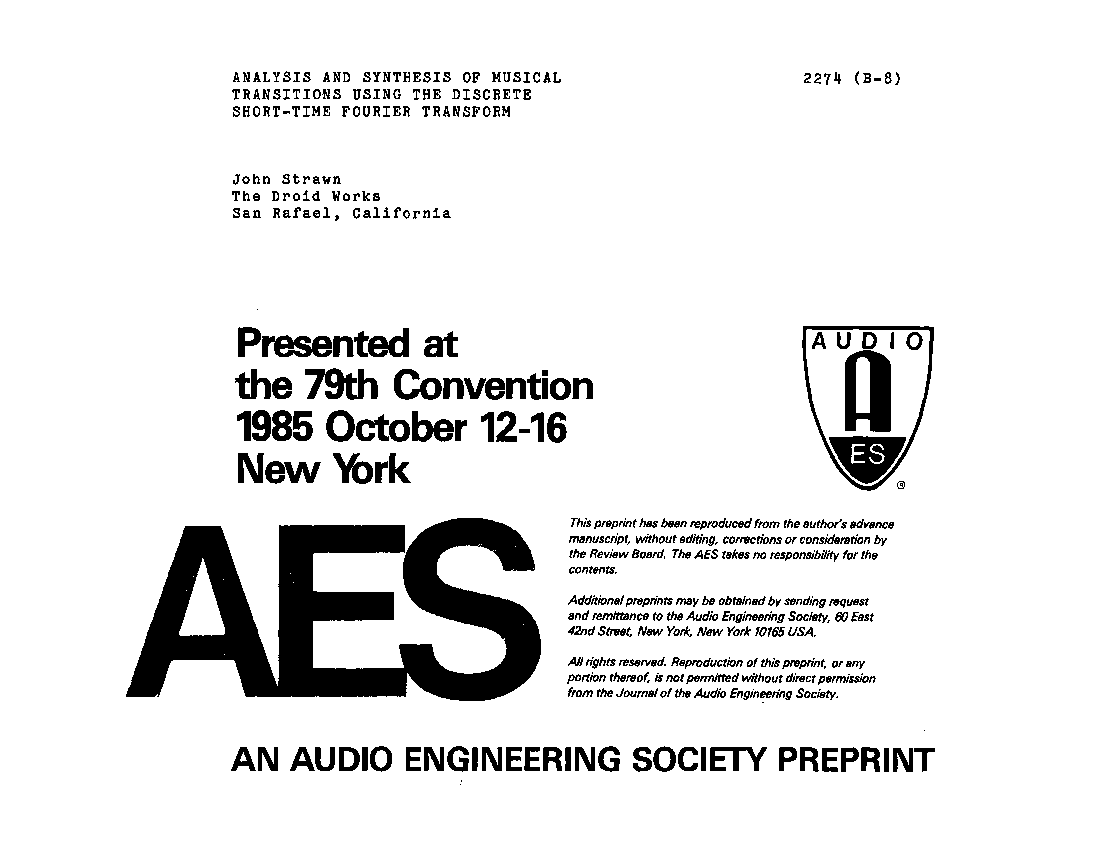Home / Publications / E-library page
You are currently logged in as an
Institutional Subscriber.
If you would like to logout,
please click on the button below.
Home / Publications / E-library page
Only AES members and Institutional Journal Subscribers can download
To date, the discrete short time Fourier transform (DSTFT) and similar analysis techniques have generally been used to analyze only individual notes. This paper discusses problems (and their solution) in using the DSTFT for analyzing transitions between performed notes. Recordings of transitions performed on the trumpet, clarinet, and violin were analyzed with the DSTFT. Based on the responses from 10 musically sophisticated subjects, the DSTFT was shown to be adequate for modeling transitions. To create line-segment approximation of the original DSTFT data, various semi-automatic methods were developed or adapted from the literature on pattern recognition and approximation theory. In a second experiment with the same subjects, line-segment approximations were shown to model musical transitions adequately.
Author (s): Strawn, John
Affiliation:
The Droid Works, San Rafael, CA
(See document for exact affiliation information.)
AES Convention: 79
Paper Number:2274
Publication Date:
1985-10-06
Import into BibTeX
Session subject:
Acoustics and Sound Reinforcement
Permalink: https://aes2.org/publications/elibrary-page/?id=11481
(1114KB)
Click to purchase paper as a non-member or login as an AES member. If your company or school subscribes to the E-Library then switch to the institutional version. If you are not an AES member Join the AES. If you need to check your member status, login to the Member Portal.

Strawn, John; 1985; Analysis and Synthesis of Musical Transitions Using the Discrete Short-Time Fourier Transform [PDF]; The Droid Works, San Rafael, CA; Paper 2274; Available from: https://aes2.org/publications/elibrary-page/?id=11481
Strawn, John; Analysis and Synthesis of Musical Transitions Using the Discrete Short-Time Fourier Transform [PDF]; The Droid Works, San Rafael, CA; Paper 2274; 1985 Available: https://aes2.org/publications/elibrary-page/?id=11481